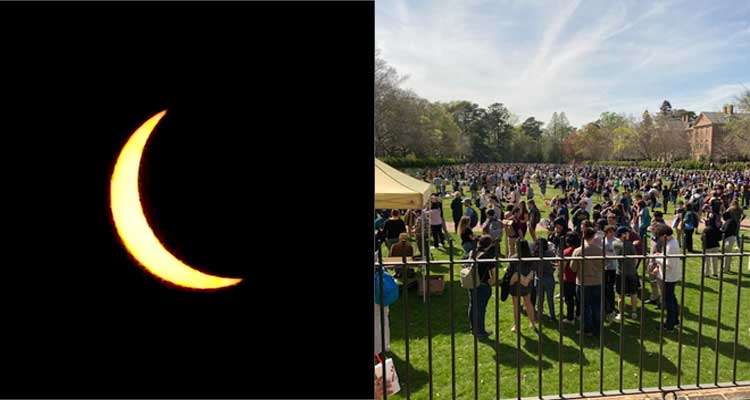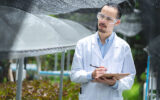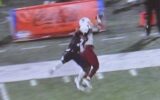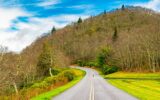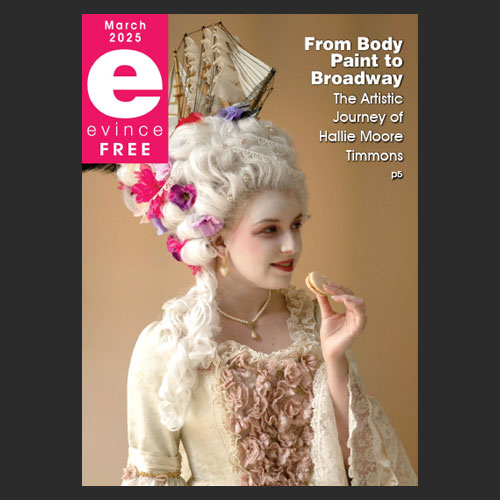I’m writing on a “partly cloudy, “partly sunny” (meteorologist terminology) day. Clouds sometimes obscure the sun, subduing the glow from above, and shading the glow of spring’s later-blooming perennials from below.
But these clouds make for a more “normal” dimming of the day than that seen back on April 8th: the eclipse of the sun. Of course, from here in Danville, the eclipse was partial, but still very effective as “something out of the ordinary” to be observed.
During the 2017 eclipse, 2024 looked a long way off, but that time span, like that eclipse, came and went, sort of like time eclipsing itself (over time).
On the afternoon of April 8th, I met up with my son, Jeremy at the law office where he works, so we would both be able to see that “first bite” out of the sun (made by a big dragon in ancient China, or in ancient Vietnam, a frog).
I then went searching Ballou Park for trees which had enough early spring leafy growth in order to make pinhole projections of partial suns on the ground from that great source in the heavens. I walked around beneath a number of trees but didn’t see any. The leaves looked to be too small, and the distance between too great to be “just right” (maybe Goldilocks would have had greater luck). Any passersby seeing me would have possibly thought: “He must have lost something under a tree but forgot just which tree.”
While looking at the many shadows of leafy spring boughs to find a pinhole, I started thinking about “the shadows of the day.”
To me, the sun’s partially hidden daylight looked to be something different from just “less light.” And the sky was still blue, but “strangely blue.” Perhaps the atmosphere didn’t “know what to think,” with an otherworldly shadow slicing into it.
And looking at the image through the eclipse glasses, in “my astronomical mind’s eye” I imagined the moon’s shadow looking like a black column reaching from the heavens to earth (opposite the usual directional “reach” of columns). That “column” was too many miles westward for a total eclipse (and, if further west, nothing at all).
When a few clouds crossed the partial sun, their shadows were still cast. Seeing them, I thought of the shadow and light striking from far beyond the clouds. Pondering that distant realm, one’s breath is almost lost (and in that realm, there is no breath to take).
The moon’s shadow was traveling many miles to Earth. But all anyone needs to do in order to travel to our own earth’s shadow is wait till nighttime, open your door, and take a step outside (even if you stay inside, you’re still wrapped within that shadow, overall).
After searching for pinhole images beneath the arboreal boughs of Ballou Park, I stopped back at my apartment and saw that such images had come to my doorstep. The holes between the leaves of an adjacent holly bush had excellently projected several perfect, quarter-sized partial suns.
I drove back to the office where Jeremy works to view the moon’s maximum coverage of the sun with him. He had his eclipse glasses out and his Samsung smartphone, taking pictures (using a special screen to prevent “fried phone”). A lady just up the street was also watching. I got into a conversation with her about the pinhole images cast through tree leaves. She said a strainer found in the kitchen might do as a pinhole projector, as well. I’ll have to remember that! The strainer may come in handy for the next really decent partial solar eclipse on Jan. 14, 2029. But for the partial solar eclipses following that, and being 73 years of age, I have more to worry about than just the weather!
Across the way, In the courtyard of the James F. Ingram Justice center, some members of the Clerk of Court staff (including my daughter-in-law, Rose), the bailiff, and a few deputies came out on their break to view the eclipse at its height, so Jeremy and I joined them.
As we watched through our eclipse glasses, I mentioned the distance from the earth to the moon is 238,000 miles. And I added that since my 2000 Oldsmobile Alero has 270,000 miles on it, I’ve made it to the moon, and am part of the way back!
That comment garnered some smiles, but no guffaws.
We saw a few spindly weeds beside the pavement which seemed to cast “strangely blurred” shadows. Those shadows seemed to be “confused” by the moon’s great shadow as to “just what to do,” as far as coming into focus was concerned.
Jeremy noticed that the series of manufactured holes in a steel rod holding up a courthouse parking sign turned the rod into an excellent pinhole projector. The little “mini-partial-suns” seemed to “walk the line” on the ground, then ascended up a parked car’s front bumper.
Jeremy took pictures of the eclipse and the pin-hole projections. Up in Williamsburg, my daughter Rachel took eclipse pictures and a picture of a mass of “pin-hole suns” which reminded me of the “spray-of-eye-like-orbs” effect made by a mass of peacock feathers (remembered from peacocks seen on family visits to the Biltmore Estate in Asheville, N.C.).
After a few minutes of observing, the courthouse staff and officers went back inside, since they had to help with the administration of the laws prescribed for people, of which people sometimes forget or ignore.
Not so for the sun, moon, and earth, unerringly following the laws prescribed for their movement, even to the point of being more regular than clockwork.
